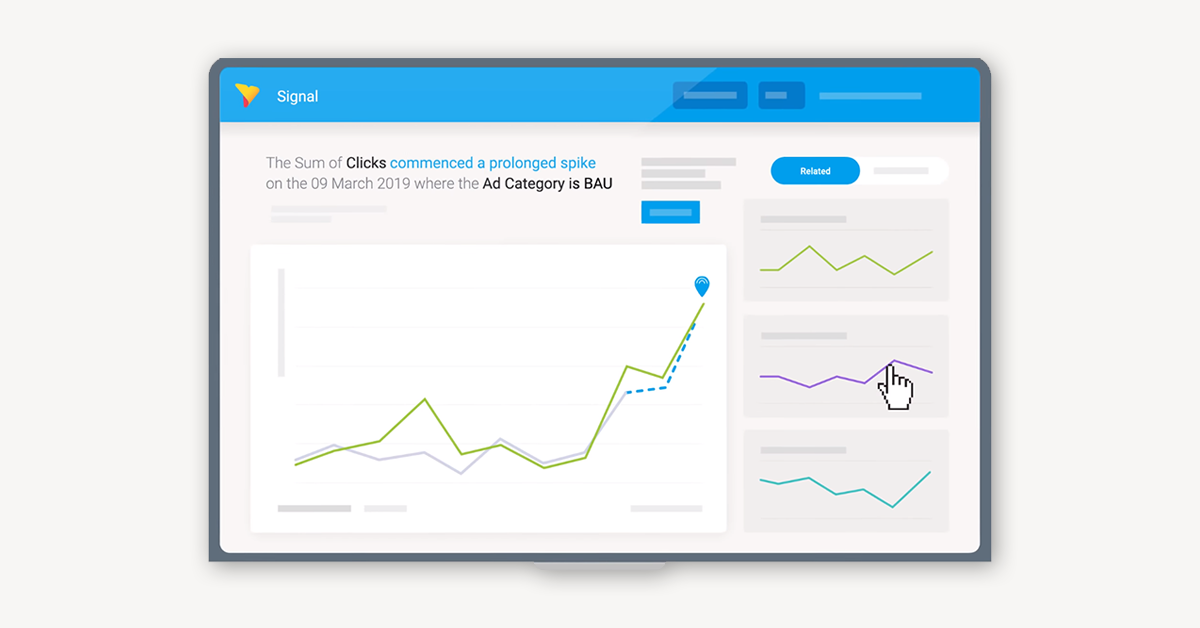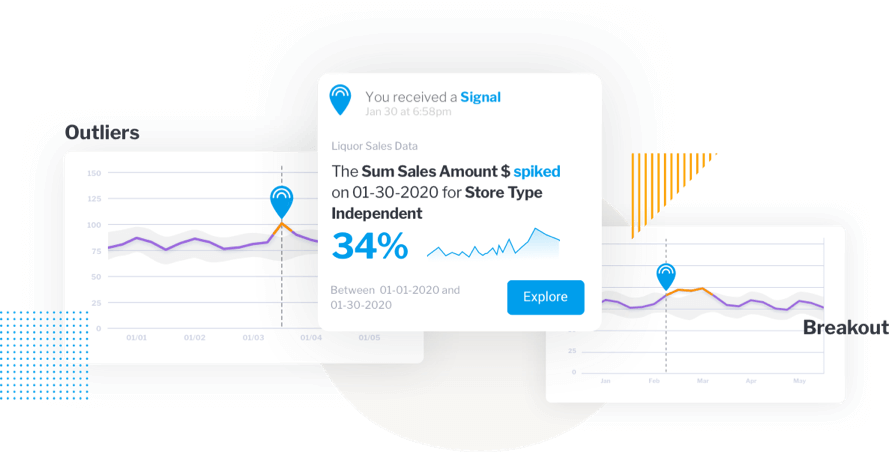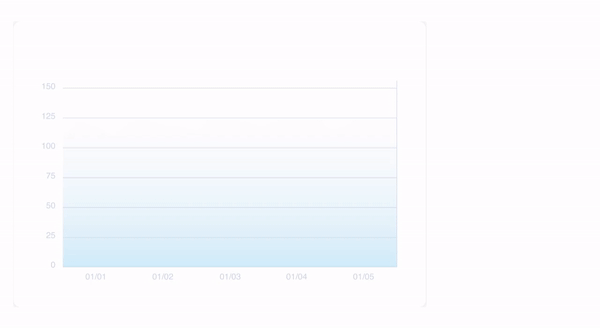
5 key business benefits of Automated Business Monitoring
Understandably, however, the many automation, AI and machine learning technologies that come with modern analytics solutions can sometimes be hard to keep up with.
One area we get asked a lot about is ABM, which we offer with Yellowfin Signals, and what exact advantages it brings to the table for everyday analysis and insight generation.
In this blog, we take the time to breakdown the top 5 key benefits of automated business monitoring and why you need to consider it as part of your analytics solution today.
Benefit #1: Proactive response to changes
Automated business monitoring systems excel in helping people respond to business changes that need immediate attention and take action to proactively prevent problems.
Through automation, AI and machine learning technologies, it can automatically trawl large volumes of your data to detect and identify statistically significant changes, and notify your people of anything relevant to your business or role very quickly.
Having this kind of automation readily available as part of your analytics platform helps your people keep on top of sudden changes, including issues that can’t always be anticipated or identified beforehand through traditional analysis using dashboards.

For example, one of our customers in the aviation manufacturing sector used the automated capabilities of Signals to closely monitor their production line in real-time.
Because they mass produced turbine blades that required expensive materials and needed to follow strict regulations, they needed a way to analyze huge amounts of data (equipment, measurement points, material arrival dates) faster than they could manage with manual processes, and detect patterns that could lead to manufacturing issues.
Once the company had Signals' automated business monitoring capabilities, in place, they were able to automatically generate a list of incompatible items in their production workflow, and achieve the following beneficial outcomes:
- Ensure the entire manufacturing process was continuously viewable and optimized
- Prevent costly issues with real-time alerting and monitoring of changes in production
- Improve the efficiency of their self-service reporting and analysis overall
Ultimately, having automation capabilities as part of your embedded analytics platform equips your users with more information so they can take informed action and avert, adapt and respond to business changes in a way that is fast, easy and reliable.
Read more: What is automated business monitoring?
Benefit #2: Optimized costs and increased ROI
As automated monitoring systems enable proactive detection of issues, it can help your business minimize costs, reduce risk and even completely avert untimely expenditures.
As a direct example: Yellowfin healthcare and cosmetics customer KYOWA leveraged ABM using our Signals capability to solve their issue around unexpected stock shortages for certain in-demand products.
Previous manual processes caused mistimed orders or out-of-stock items missed entirely, but with ABM they now can detect inventory levels instantly and prevent stock outs. In KYOWA’s specific case, the capabilities of automated monitoring and reporting helped reduce annual losses of 50 million yen from out-of-stock events to almost zero.
Customer case study: How KYOWA used Signals to automate inventory management
Benefit #3: Instant, reliable access to unknown metrics
You don’t know what you can’t see.
Dashboards measure operational performance against predefined “known” metrics and give a high-level, typically aggregated view of some of an organization’s most critical business data. This is done to keep things simply rather than complicated, for an easy at-a-glance overview.
For operational BI use cases, dashboards are great. But by nature of its design, on its own dashboards can only enable a view of some of the data needed for decision-making.
Analytics platforms that have automated business monitoring, on the other hand, can:
- Help track all types of business metrics - both known and unknown
- Rapidly sift through data too large or complex to monitor using traditional techniques
- Show your users areas of opportunity they may not have considered ever

And when automated business monitoring systems find something - whether it’s unseen trends in regional sales reports, or sudden changes in pattern of stock levels - these tools alert and surface these insights directly to your users without delay.
In providing a reliable way to view unknown data, it provides more time to interpret, share and respond to valuable surfaced insights instead of having to explore large sets of data to find opportunities manually (with no guarantee they will be discovered).
Read more: Dashboards vs automated business monitoring: What’s the difference?
Benefit #4: More time to focus on other priorities
Automated alerting and automated reporting are well documented in performing much of the ground-work in getting insights and important changes in data in front of business users, and it does so continuously and reliably (with parameters are set up appropriately).
Because users don’t need to put in the usual time in trying to explore and monitor data manually to surface insights to inform their decision-making, overall productivity is increased, and they can instead invest time elsewhere to focus on other priorities.

As previously mentioned, Yellowfin customer KYOWA had set up Signals’ to automatically monitor and alert them to changes in their inventory, replacing their previous manual process of entering and managing inventory count using spreadsheets.
With significant time saved through auto-detection and alerting of changes, the KYOWA team then focused on educating their people on why Signals was useful and how to use it in their daily operations. This allowed the company to smoothly integrate automated data analysis into their day-to-day operations, and only further improved their use of Yellowfin’s other embedded analytics features long-term.
Learn more: How businesses use automated business monitoring
Benefit #5: Boosts user adoption of BI tools
Simply giving access to self-service analytics tools doesn’t mean people will use it.
But having an embedded analytics platform that can automatically and proactively surface issues and bring sudden changes and potential insights directly to the user, minimizing the effort and any roadblocks they may have in getting started with analytics.
If your users knows their analytics can point them toward valuable opportunities in their data, they're more incentivized to use analytics for their daily operations and decision-making, increasing and making adoption easier across the organization overall.
Read more: Automated business monitoring - Why you need it now
Whitepaper: Business Monitoring Systems: Using Machine Learning to Analyze Business Metrics
For a deeper dive into how capabilities like Yellowfin Signals can fit your embedded analytics use case and the additional advantages it can bring, continue on to read our free report on automated business monitoring below.